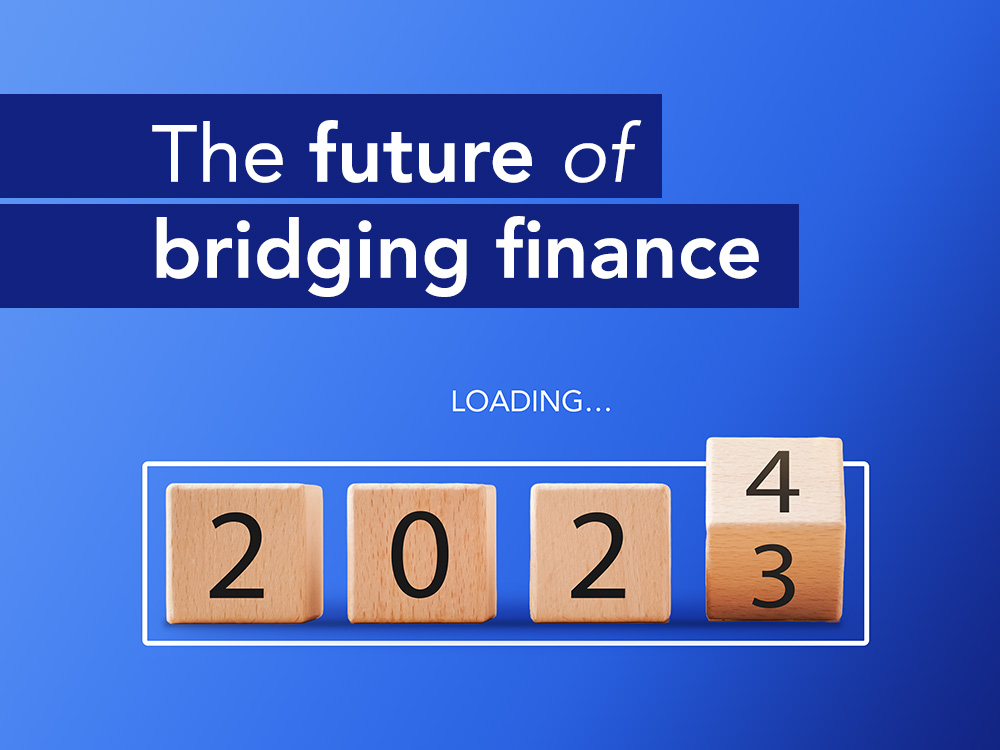The Future of bridging finance
In 2022, demand for bridging finance in the UK rose by almost a third compared with 2021, as the total amount in the national bridging ‘loan book’ reached more than £6.4 billion.

There is every sign that this growth will continue, as more individuals, investors and businesses recognise the advantages of bridging finance to help them achieve their goals, spurred in large part by the increasing availability and affordability of the sector.
Several other factors continue to drive growth in the bridging market. Competition for limited investment properties means that borrowers need to move fast to secure a deal, something they may be unable to achieve through traditional mortgages. Estate agents and sellers clearly favour cash buyers, providing them with the security of deal completion and speed of transaction.
Banking anxiety
Rumbles in the banking world – with the collapse of two American lenders and the acquisition of Credit Suisse in March – have caused renewed anxiety across the sector, causing greater risk aversion and leaving the field open for bridging finance companies to step in.
The rise in available funding, the range of products and the number of companies offering bridging finance means on one hand that customers feel greater confidence in bridging. On the other hand, newer entrants may be less experienced, may have less robust underwriting standards and could be more susceptible to fraud, potentially placing the sector at risk if there is a public perception of poor standards or misbehaviour.
Recent reports talk of ‘ambulance chasing’ claims companies who are scrutinising the bridging loans market, aiming to secure compensation for customers and income for themselves. For example, if a lender pays a commission to a broker, but this is not disclosed to the borrower, the entire loan could be set aside (ie rendered invalid), and the lender may have to compensate the borrower and pay damages. Bridging finance companies will need to take extra care to have robust and fair policies in place, with watertight procedures and documentation.
Lack of product
In large cities (especially London), the chronic lack of available property to rent means that developers and buy-to-let investors have a strong incentive to act quickly, to soak up this wave of demand. At the same time, the shift from office to home working, which accelerated dramatically during the pandemic and remains a demographic phenomenon, has cleared the path for widespread conversion of commercial space to residential. Many retail spaces are also vacant, as shoppers migrate online. Government policies have encouraged this shift, through more relaxed planning laws, leading to quicker decisions and more cost-effective processes for developers.
In combination, these two factors present ideal circumstances for bridging finance: there is an urgency to address an acute problem, there is a massive supply of unorthodox property in need of conversion and renovation, and equally massive unmet demand. Bridging finance companies have already picked up on this trend and have begun offering specialist loans in response.
A beneficial side-effect of this movement is the revival of inner-city life, as former commercial spaces are reclaimed as residential units by young professionals attracted by the access to bars, restaurants, transport links and job opportunities. In many cases, the new units are more affordable than traditional residential properties – a further bonus.
High-tech future
Machine learning, AI, open finance technology, the Internet of Things… the real-life applications of these buzzwords are transforming almost every aspect of modern life, from driverless cars to remote learning.
Is there an application for bridging finance? Apparently so, or at least there could be very soon.
Buy Now Pay Later (BNPL) is now a well-established concept. Otherwise known as ‘embedded lending’, US shoppers spent upwards of $50 billion through BNPL platforms in 2022 and experts predict the total will rise to $265 billion within three years. The same is true in the UK.
For now, the technology has mainly applied to mid-scale items like household furnishings, pushing up to larger purchases such as cars, but there are already examples of lenders such as Vontive in the United States offering mortgages for investment properties, or Habito, which allows customers to request a mortgage in principle via an app.
“Any lender can take advantage of embedded lending, provided they have the technology and the operating model,” stated Leigh Pepper, Chief Product Officer at 10x Banking in the Bridging Loan Directory. By mid-2022, Vontive had processed more than $1 billion in loans.
So if mortgage lenders can do it, bridging finance companies could soon follow suit. Indeed, there is the potential for bridging loan companies to steal a march on mortgage providers, since their unregulated status makes them freer to offer new and untested options. “There is a vast untapped potential for bridging lenders in the world of embedded finance,” argued finance commentator Hannah Duncan in the Bridging Loan Directory.
Serving the underserved
Blockchain technology could also play a part in the future of bridging finance. With its promises of increased transparency, security and efficiency in transactions, blockchain has enabled fintech companies to provide financial products to people and communities with little or no access to banking services.
“Both bridging loans and fintech can help to increase financial inclusion by providing access to financial services for individuals and businesses that may have been previously underserved by traditional financial institutions,” stated the fintech website Financial IT. The site noted that if fintech and bridging finance combine constructively, it could lead to cost savings for customers through lower interest rates and fees.
Final thoughts
In future, the equity that someone holds in their property could be treated more like a bank account, which they can dip in to at any time. Why should those hundreds of thousands (or millions) of pounds simply sit on a piece of land, when they could be put to a more constructive and profitable use?
Freeing up capital to be more productive has helped economies and societies to grow throughout history. Bridging finance already plays an important role in wealth creation. With greater coordination between financial providers, better financial education among the public, and greater liquidity in real estate investment, this role could expand dramatically in the future.
For homeowners and property investors, understanding these movements – especially the innovations in technology – is likely to mean easier, more affordable and flexible access to loan capital, to the benefit of society as a whole.





